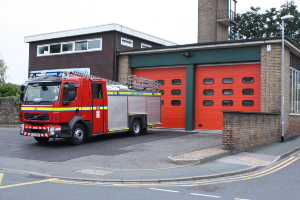Case study

UCLan: Urgent action needed to protect firefighters from risk of getting cancer, scientists find
24 Nov 2020
 University of Central Lancashire report makes urgent recommendations to minimise firefighters’ exposure to toxic fire effluents.
University of Central Lancashire report makes urgent recommendations to minimise firefighters’ exposure to toxic fire effluents.
Ground-breaking research has revealed the serious health risks to UK firefighters following exposure to toxic fire effluents, the chemicals emitted during a fire, in an independent University of Central Lancashire (UCLan) report commissioned by the Fire Brigades Union (FBU).
The work is a UK first and the latest in a growing body of international evidence suggesting an increased risk of firefighters developing cancer and other diseases. Fires produce a cocktail of toxic, irritant and carcinogenic chemicals in the form of aerosols, dusts, fibres, smoke and fumes or gases and vapours.
The report includes a summary of UCLan’s testing on-site at 18 fire stations as well as over 10,000 responses to a national firefighter survey run jointly between the FBU and UCLan.
Indoor air testing at a number of fire stations and training centres highlighted that UK firefighters are still being exposed to the high levels of toxic contaminants during and after a fire, as cancer-causing chemicals remain on PPE clothing, equipment, and elsewhere at the fire ground. Test samples revealed carcinogens inside firefighters’ helmets, on PPE, and even on breathing apparatus mask filters.
More than 10,000 currently-serving firefighters were surveyed in order to better understand UK decontamination practices and the prevalence of illness, revealing:
- 4.1% of survey respondents had already been diagnosed with cancer, compared with less than 1% of the general population. Three quarters have served for at least 10 years before receiving their diagnosis. More than half were under the age of 50 and a fifth were under 40.
- Of those diagnosed, 26% have skin cancer, the most common, followed by testicular cancer (10%), head and neck cancer (4%) and Non-Hodgkin’s lymphoma (3%).
- Half of the survey respondents don’t think their fire service takes decontamination practices, including cleaning PPE and equipment, seriously.
- 1 in 5 of the survey respondents store their fire gloves in their boots, 1 in 5 store in their pockets, and 1 in 10 store in their helmet, risking the transfer of toxic contaminants directly to skin.
- Nearly half of the survey respondents felt there was a “badge of honour” attitude in the service, particularly when emerging from fires with contaminants on their PPE or face as a sign of hard work.
Scientists have created a best practice guide for fire and rescue services, putting forward a number of urgent recommendations to minimise firefighters’ exposure to toxic fire effluents. This includes:
- Every fire and rescue service must implement fully risk-assessed decontamination procedures en-route to, during and after fire incidents, and ensure all relevant staff are trained in implementing these procedures.
- Fire and rescue personnel should receive regular and up-to-date training on the harmful health effects of exposure to toxic fire effluents, and how these exposures can be reduced, minimised or eliminated.
- Firefighters should wear respiratory protective equipment at all times while firefighting, including after a fire has been extinguished, but is still ‘gassing off’.
- PPE should be clean and should be thoroughly decontaminated after every incident to avoid a build-up of toxic contaminants.
- Firefighters should shower within an hour of returning from incidents.
- Regular health screening and recording attendance at fire incidents over the course of a firefighter’s career is strongly advised and will be key to the longer-term monitoring and management of their health.
Read more here.